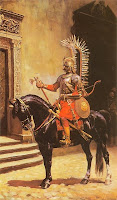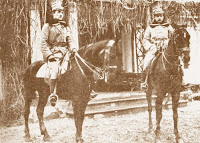Salve,
in January 1905 a rising star of Polish modern art Xawery Dunikowski shot and killed established painter and a very popular member of Warsaw elites Wacław Pawliszak. They say it was a crime of passion, as it took place in a popular upscale restaurant full of important and known patrons eating dinner. The killer was never punished for his actions as the 1905 Revolution broke out and perhaps Xavery was too popular with then art world movers and shakers...
He was a disciple of Wojciech Gerson and Jan Matejko, lover of the so called Orientalist art and historical genre, especially Polish history, great painter of horses and mythology (illustrated Austrian/German edition of One Thousand and One Nights), great horseman and athlete, a consumed traveler and bon vivant.
Monsieur or pan Pawliszak's works were collected privately, he died 13 years before the Restitution of Poland, and during the Communist or Soviet Poland this type of art was scorned and attempts were made to remove it from the so called ''public eye.'' Therefore most of his paintings, almost 400 were presented at the exhibit following his funeral (he left a daughter and an ailing wife), are in the private hands in Poland and perhaps in the US too, as lots of well-to-do Jewish Poles/Polish Jews took with them their paintings when emigrating to the US.
Let me show you some of pan Wacław paintings and sketches:










































